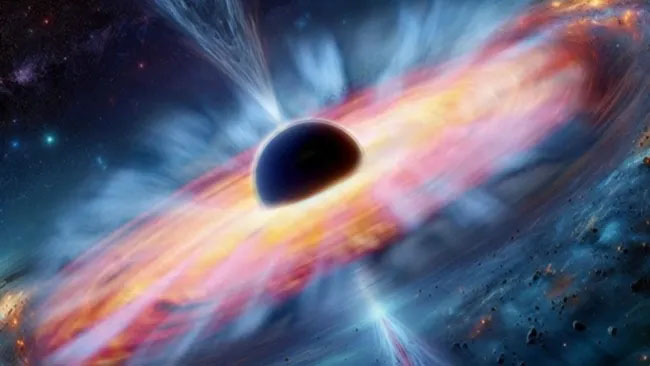Science: Scientists have found evidence that black holes that formed less than 1 billion years after the Big Bang may have grown to monstrous sizes, defying the laws of physics. The discovery could solve one of the most important mysteries in space science: how did supermassive black holes in the early universe grow so big, so fast?
Supermassive black holes with masses millions or billions of times that of the Sun are found at the center of all large galaxies. They are thought to grow from a series of mergers between successively larger black holes, as well as sometimes by feeding on matter around them. Such nourishment causes supermassive black holes to accrete matter around them (in flat clouds called “accretion disks”) and shine so brightly that they can be seen from great distances. Such bright objects are called “quasars” and can outshine the combined light of every star in their galaxies.
However, the processes that allow black holes to reach “supermassive status” are thought to occur on timescales of 1 billion years or more — that means observing supermassive black hole-powered quasars 500 million years or more after the Big Bang, as the James Webb Space Telescope (JWST) is doing, is a big problem (or even a supermassive problem?) for scientists.
Sponsored Links
To solve this mystery, a team of researchers used the XMM-Newton and Chandra space telescopes to examine 21 of the earliest quasars ever discovered in X-ray light. They found that these supermassive black holes, which may have formed during an early universal epoch called “cosmic dawn,” can grow rapidly to enormous masses through bursts of intense feeding or “accretion.”
The findings could ultimately explain how supermassive black holes came to exist as quasars in the early universe.
“Our work suggests that the supermassive black holes at the centers of the first quasars that formed in the first billion years of the universe must have increased their masses very quickly, defying the limits of physics indeed,” Alessia Tortosa, who led the research and is a scientist at the Italian National Institute of Astrophysics (INAF), said in a statement.
The rapid feeding that occurred into these early supermassive black holes is thought to be law-defying because of a rule called the “Eddington limit.”
